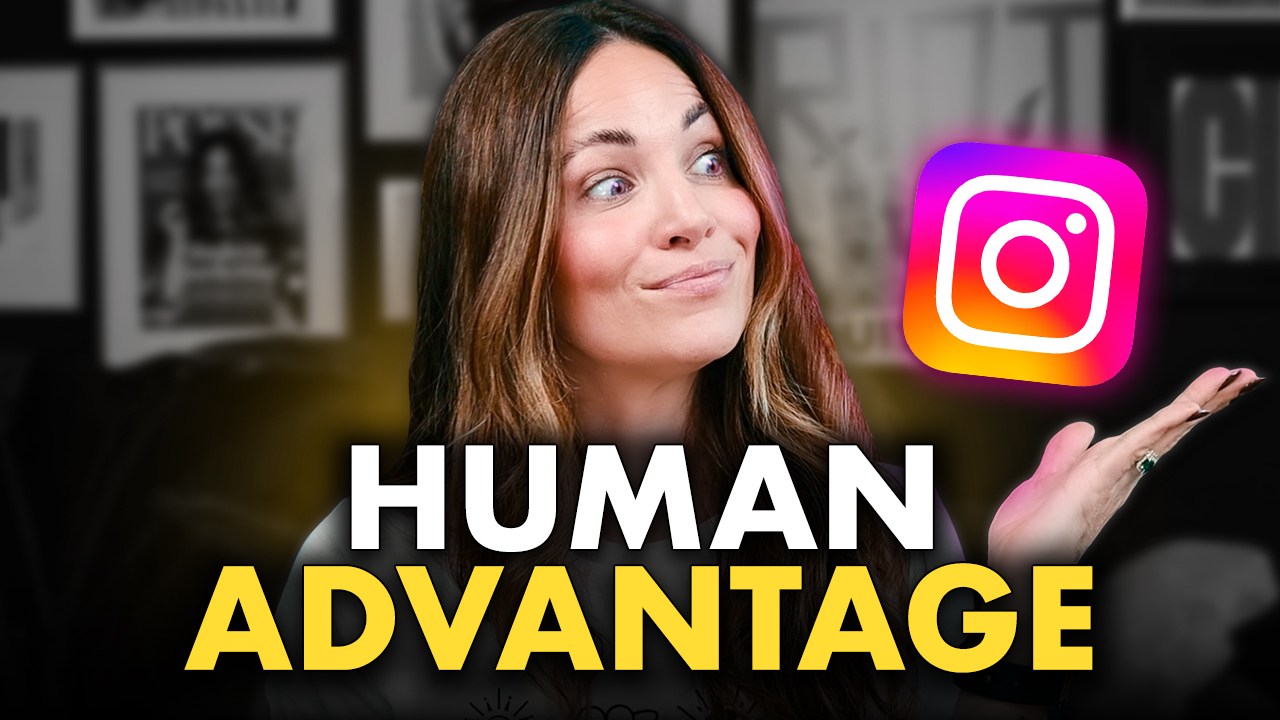When it comes to icons in the copywriting world, there are certain names that everyone recognizes…
David Ogilvy, Leo Burnett, Gary Halbert, & Eugene Schwartz just to name a few. And while their contributions to the world of marketing, advertising & copywriting cannot be denied…
I think it’s about time we shed some much needed light on the iconic women who helped redefine and shape the entire industry—with some of the most recognizable Ads, slogans, and campaigns of all time…
Welcome to Part 2 of the Iconic Women that shaped copywriting history.
Hey, Posse! What’s up? It’s Alex.
And welcome back to part 2 of this series where we’re highlighting some of the most iconic and legendary women that shaped copywriting and marketing history as we know it.
If you haven’t already – make sure to check out part 1 after this one because some of my absolute favorite women are featured there.
But first – if you’re new to the crew – welcome!
My blog is here to help you understand the world of marketing, copywriting, and freelancing so you can create a business you love, find the freedom you deserve and live life on YOUR terms – so if that sounds good to you, be sure to subscribe to my newsletter below.
Now we’re going to start off Part 2 with one of my favorite female copywriters ever…
Meet…
#1 – Barbara Proctor
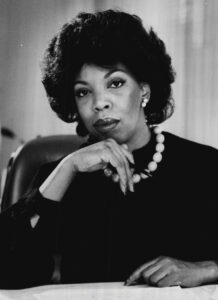
Barbara Gardner Proctor was the FIRST Black Woman to own an advertising agency… but before she decided to venture out on her own – she worked for two different Chicago advertising agencies.
The year was 1969, and the agency she wrote for was working on a new campaign that would parody the social justice marches that were happening during the times… all so they could sell some hair-care products.
Being a Black woman (and perhaps the only Black woman in the agency) – Barbara was assigned to the campaign.
For obvious reasons, she was NOT cool with minimizing and mocking this social justice movement in order to sell hair-care products. So, she spoke up – and as a result, she was fired.
The very next year she started her own advertising agency – Proctor and Gardner Advertising – which she later built into a multimillion–dollar company. Some of her most notable clients included Kraft and Jewel Food Stores, but she worked for a large number of clients and specialized in marketing to the Black community.
The New York Times can be quoted saying:
“Barbara Gardner Proctor was a legendary pioneer in advertising, entering the business during the 1960s ‘Mad Men’ era when Black people generally could not get hired in advertising firms….”
To say she was a brave badass that we can all look up to is a massive understatement.
She was a fearless woman who wasn’t afraid to speak up in a room full of white men. And when she was fired as a result, she went out on her own and showed them how it’s done…
To the tune of $12M (that’s $32M in today’s money!)
#2 – Helen Gurley Brown

She’s probably best known for her best-selling 1962 book: “Sex and the Single Girl”. But Helen Gurley Brown was also a copywriter and editor-in-chief of Cosmopolitan magazine.
Um, hello — she’s like a real-life Carrie Bradshaw!
It was her role & influence in the company that helped transform Cosmo from a literary magazine filled with high-toned and uppity content… into the modern, everyday woman magazine it is today.
Helen was an outspoken advocate for women’s sexual freedom – and she was a BIG believer that women can (and should) have it all… love, sex, and money. In terms of her copy, well she didn’t hold anything back there either.
She wrote copy for Max Factor makeup, including Ad titles like “Wild Irish Eyes,” “Siren Eyes, and “Devil Eyes” and wrote this ad:
“It’s nice to be an angel most of the time — but tonight — let your eyes reveal the daredevil side of you! Let them go deep, dark and devilish…..”
Yesh—that’s provocative even for today!
We have her to thank, in part, for what’s often referred to as the female sexual revolution.
#3 – Jean Wade Rindlaub
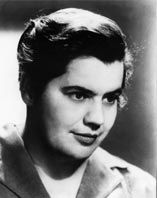
Jean Wade Rindlaub was one of the first American women to become a major advertising executive, rising to become the only female member of the Board of Directors and vice president of BBDO Advertising Agency.
What’s so amazing about this powerhouse of a woman is that she laid the foundation, and really set the precedent, for one of the most valuable and important aspects of marketing today…
Conducting thorough market research.
One of the reasons Rindlaub’s campaigns were so successful was because she went above and beyond to understand her product’s consumers and their needs.
For example, for one of her clients General Mills – she collected everything she needed like:
- Cookbooks
- Culinary pamphlets
- Tons of recipes
- An entire test kitchen
Then, she interviewed thousands of women to gauge their concerns and better understand their desires and needs.
For another one of her clients – Betty Crocker Cake Mix – her advertising and copywriting skills helped them become the leader in the cake mix market, after lagging behind Pillsbury and Duncan Hines for years.
She led successful advertising campaigns for some of the most influential manufacturing companies in America, including Campbell Soup Company, Carter’s clothing, General Mills, Oneida Limited silverware, Betty Crocker Cake Mix, and Chiquita bananas.
#4 – Frances Gerety
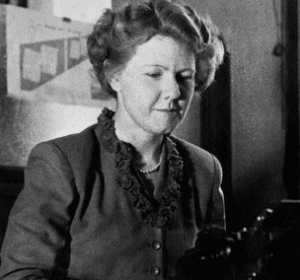
Frances Gerety is responsible for one of the most widely recognized Ad campaigns ever…
De Beers: “A diamond is forever” – created in 1947.
What I love so much about Frances’ work isn’t just that she created an iconic campaign that’s still being used today… it’s that she completely revolutionized the entire diamond industry.
Prior to this slogan, diamond engagement rings were not something that was normal or common to receive.
In 1940, only 10% of first-time brides received diamond engagement rings. With most women thinking of diamonds as a waste of money… they wanted their men to buy them “a washing machine, or a new car, anything but an engagement ring…”
So the genius behind this campaign is that THIS marked the pivotal moment in history when diamonds became “the symbol of true, indestructible love…”
The moment when the public began to believe the most romantic purchase a man could make for his lover was a diamond ring.
They were even genius enough to tell the man exactly how much he should spend on this ring – “How else could two months’ salary last forever? A diamond is forever. De Beers.” – advice that’s still commonly followed today.
And it’s safe to say their marketing worked.
Today more than 80% of women receive engagement rings, and the industry is a whopping $13 billion dollar business worldwide.
In 1999, Advertising Age named Frances Gretey’s work the slogan of the century.
#5 – Dorothy L. Sayers

Dorothy L. Sayers was an English crime writer and poet, but she began her career in – you guessed it – advertising.
Credited with coining the slogan “It pays to advertise!”– she helped to create some of the most recognizable Ads of the 20s and 30s, including “The Mustard Club” for Colman’s Mustard and even more notable…
The Guinness “Zoo” advertisements like this one (to be honest I don’t get it but it WORKED like crazy back in the day)…

Regardless I think is pretty badass she wrote for a beer brand, considering almost all women who worked in advertising during this time were strictly assigned “women’s products” to write for. You know – things like face creams, soaps, and other household products.
So the fact that she wrote this Ad Copy for Guinness – and that it’s still being used today – is definitely iconic.
#6 – Mary Wells Lawrence
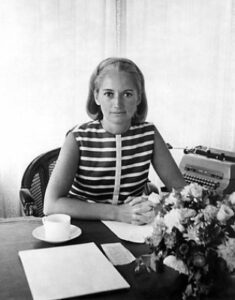
And saving one of my absolute favorite female icons for last… Mary Wells Lawrence.
She was the founding president of a major advertising agency, which she later sold for $160 million in 1990 – making her the FIRST female CEO of a company listed on the New York Stock Exchange.
After being denied a promotion promised to her at an Advertising Agency she worked for, Lawrence left the company and founded her own agency – Wells Rich Greene on April 5, 1966.
Her agency grew faster in its first five years than any other agency in ALL of advertising history… and by 1969 – just three years after starting Wells Rich Greene – she was the highest-paid executive in advertising.
And in 1969, she became the youngest person ever inducted into the Copywriter’s Hall of Fame
As The New York Observer put it, her agency, Wells Rich Greene, created ads that “etched indelible phrases into the public imaginations…”
And it’s true. Her agency is responsible for some of the most catchy slogans of our time…
- “’Flick your Bic”
- “I Love New York!”
- Alka-Seltzer’s: “Plop plop, fizz fizz, oh what a relief it is.'”
- Ford’s: “Quality is Job One”
- “Trust the Midas Touch”
These are just a few examples of her work.
When asked what it takes to be successful, during an interview she had with The New York Times in her 80s, she said…
“You can’t just be you. You have to double yourself. You have to read books on subjects you know nothing about. You have to travel to places you never thought of traveling.
You have to meet every kind of person and endlessly stretch what you know. There were and are so many talented women in the advertising business, and the real wonder is why they aren’t all running worldwide agencies of their own. I’m looking into that.”
What an absolute icon.
Okay, Posse, that wraps our 2-part series of the Iconic Women Who Shaped Copywriting!
I hope you enjoyed this flashback through history and loved learning more about these absolute powerhouse women.
If you haven’t already, make sure you check out part 1 – where you’ll learn about:
- A teenager in the 1920s who made more money with her copywriting skills than most freelancers make today…
- A woman whose revolutionary approach to copywriting completely changed the industry from only talking about boring facts and features… to utilizing the psychology behind why people buy…
- A woman who broke through tons of race & gender norms while simultaneously creating some of the most recognizable brand slogans of all time…
- Plus more incredible iconic women that you NEED to know about.
Until next time, I’m Alex – ciao for now!
